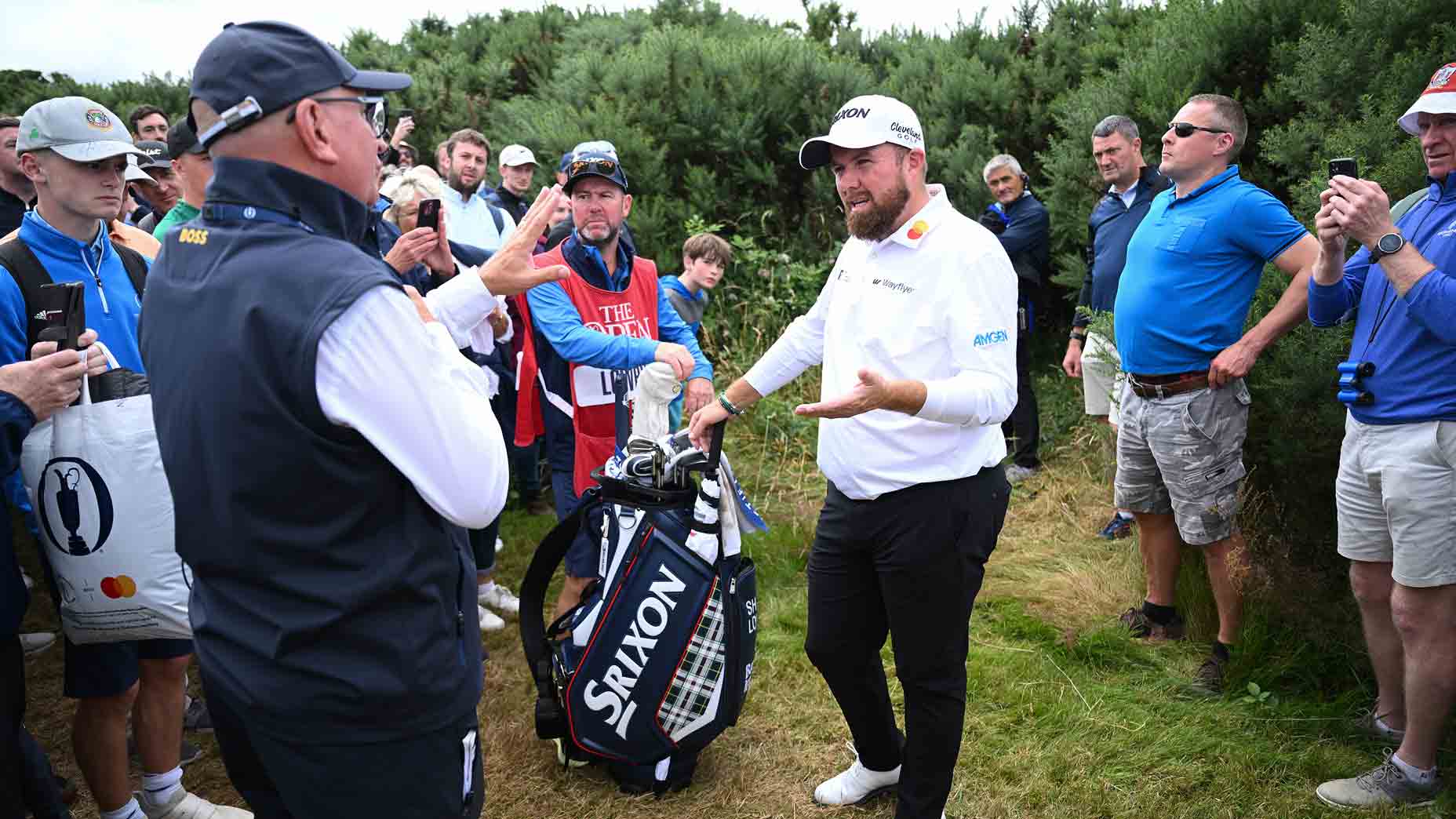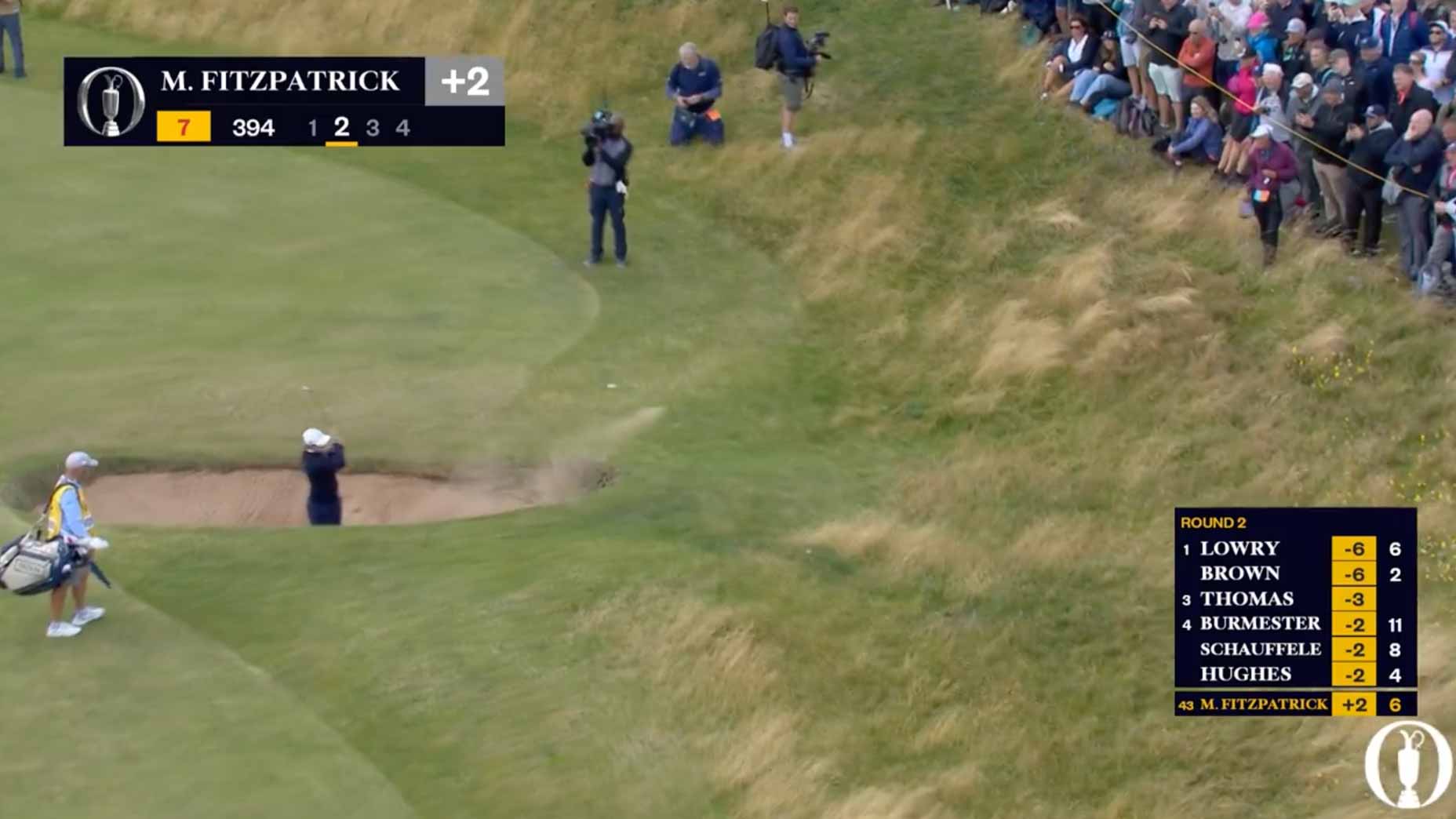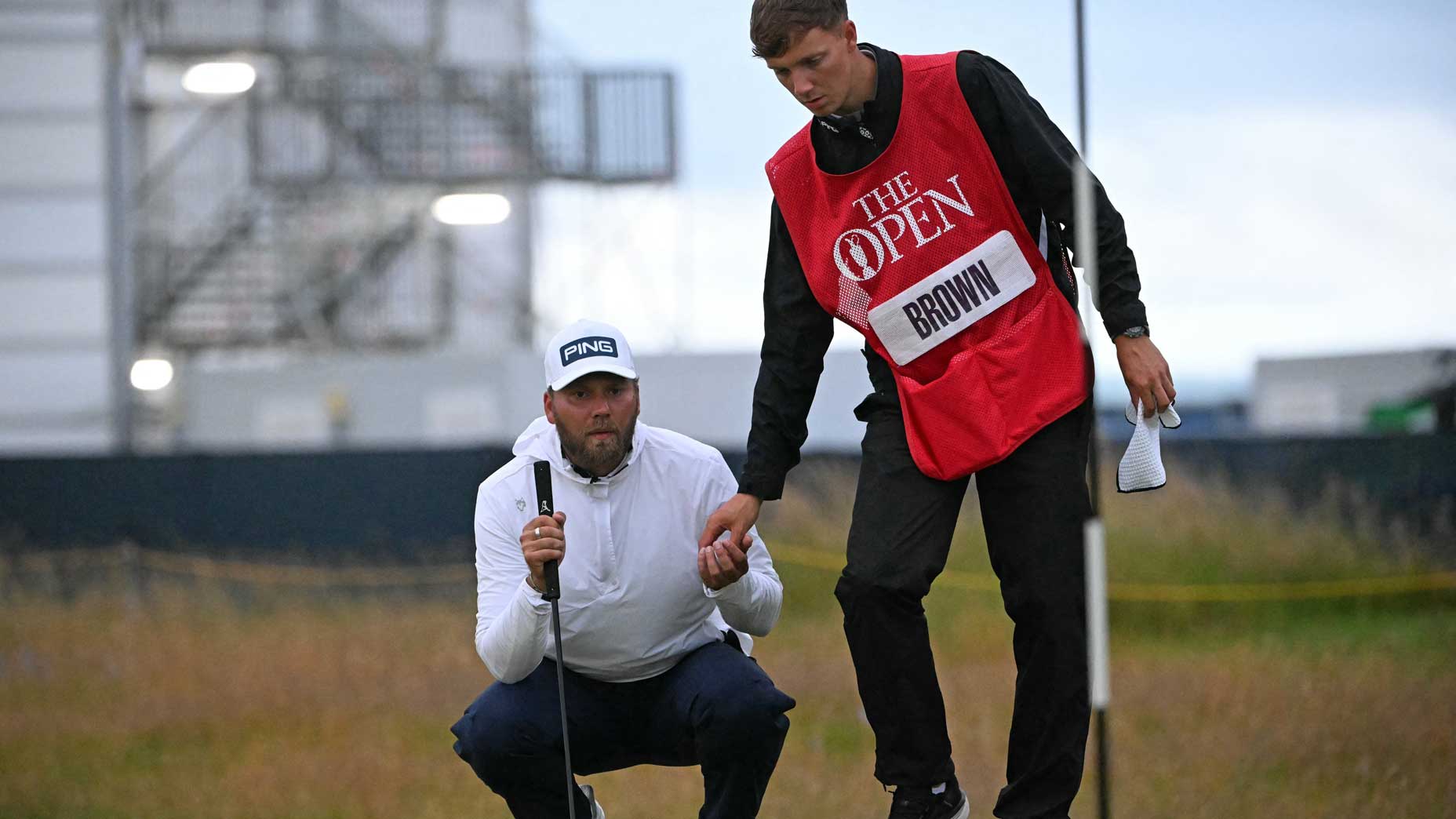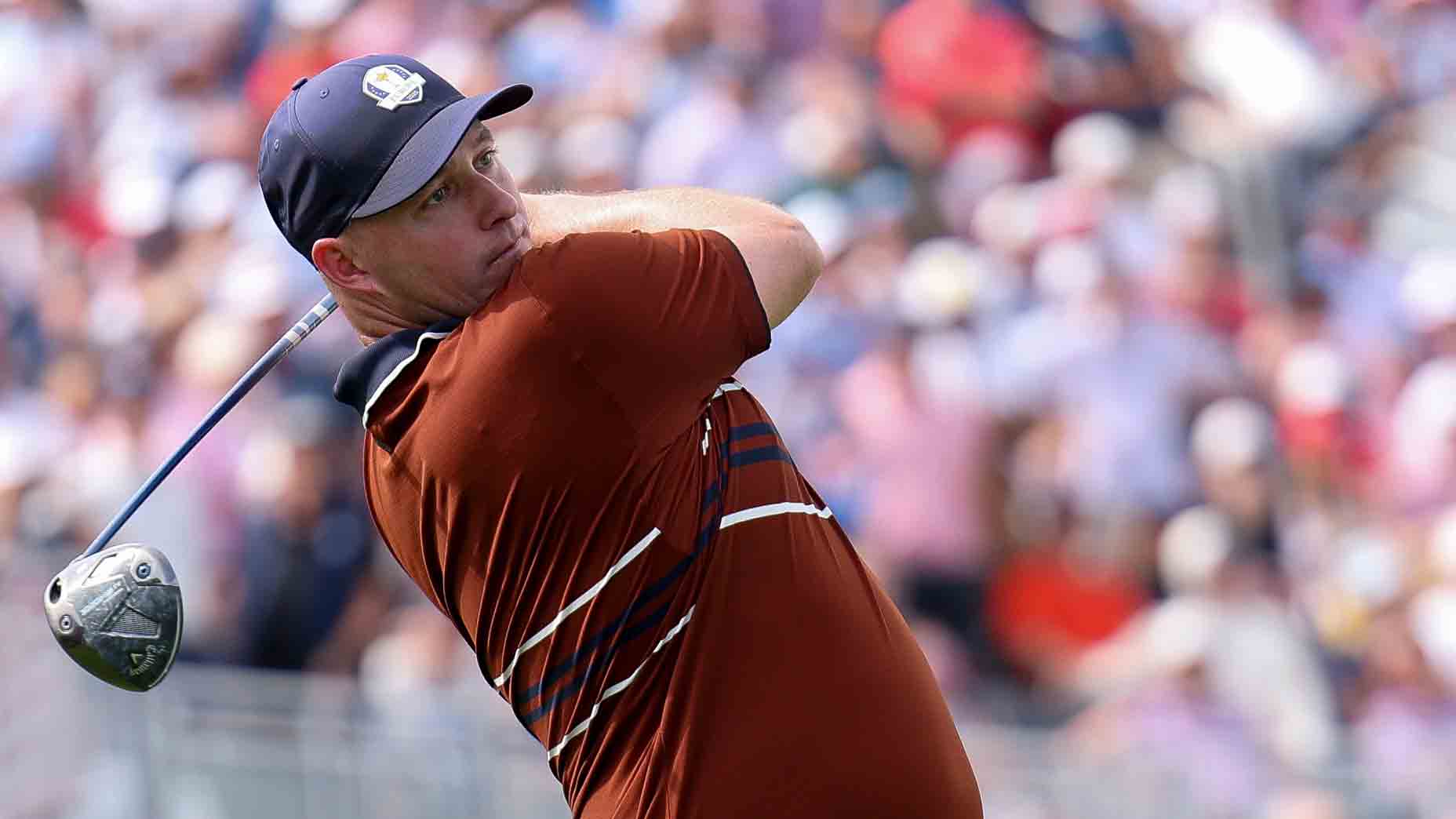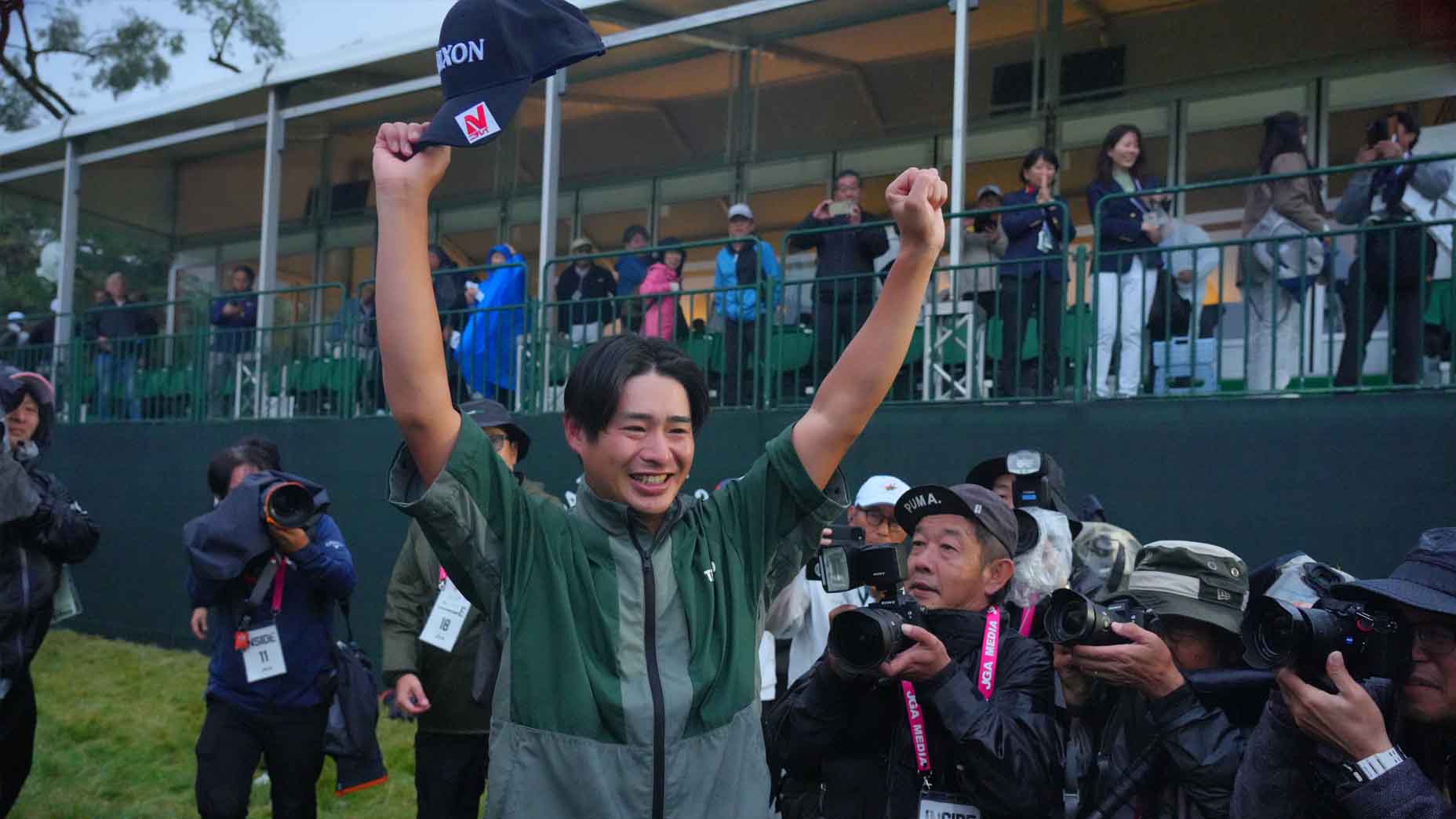Shane Lowry hit, then, in order: He yelled at a cameraman. He hit again. He talked with an official. He heard what he didn’t want to hear. He calculated.
You looked at your clock. Twenty-plus minutes in all until he hit again.
When the sequence was finished on Friday, Lowry had lost his lead during the Open Championship’s second round. But what preceded it on Royal Troon’s 11th hole was as gnarly as the fescue grass he hit into to the right of the fairway, kicking things off.
To that point, Lowry was two-under for his round and leading by a pair, but he was now in trouble. Seconds earlier, playing partner Matt Fitzpatrick had hit a shank from a similar lie from the left side of the fairway. Lowry then followed with his own. His iron rocketed his ball left, over the gallery, deep into a gorse bush.
What happened there? Thick grass? Nerves? Three seconds after contact, Lowry whipped his head to the right.
He’d heard a cameraman. TV mics picked up this from him:
“As I was over the ball, I could just see you putting your f**king camera up. Just get out of the way. Just get back there. F**k’s sake.”
Rules issues followed.
Lowry hit a provisional. It finished about 8 feet past the hole. He’d take that. But he couldn’t. Someone had found his first ball. You can imagine the words here. Rule 18.3c (3) says this: “When a provisional ball has not yet become the ball in play, it must be abandoned … when original ball is found on course outside penalty area before the end of the three minute search time. The player must play the original ball as it lies.”
So Lowry did. But the ball was deep in the cabbage.
Said an announcer on USA Network’s coverage: “It is looking rather somber in there, doesn’t it?”
Said another announcer: “Dark.”
‘A thing you never see’: Pro intentionally pitches into rough at Open ChampionshipBy: Jack Hirsh
Said another announcer: “Deep in there.”
What to do? Lowry opted to take an unplayable. But where would he drop? The process started. He eventually worked his way to his left and backward, just to the left of the adjacent 12th fairway. Figuring out a yardage was a challenge. Lowry looked. His caddie, Darren Reynolds, looked.
Said analyst Smylie Kaufman on the broadcast: “It has been pretty insane the last 10, 15 minutes because they’re holding the whole course up and Shane’s trying to figure out the right decision.”
Said analyst Paul McGinley: “Smylie, what is he going to do now to get a yardage? How is the caddie going to get yardage? This is a completely different angle.”
Said Kaufman: “It’s all feel. I mean, really, there’s no way to know exactly what the yardage is. It’s only about 115 yards to the hole location where he is right now, just looking at it from my perspective. He only really needs to land it about 80, 90 yards. But just looking at his lie, it’s not going to be an issue. There’s no way he can see where the flag stick is. And for Shane right here, it’s going to be all feel, trusting the shot.”
At this point, the broadcast showed that just over 20 minutes had elapsed since Lowry’s second stroke.
He eventually settled in. He hit his fourth stroke. It finished about 30 feet away. From there, he took two putts, finished with a double-bogey 6 and dropped into a share of the lead.
“Slightly derailed here on the railway hole here on 11,” McGinley said on the broadcast.
How Open contender’s caddie saved his round in dying light at TroonBy: Kevin Cunningham
Lowry rallied, though. He birdied 16 and 18. He exited with a two-shot advantage. Afterward, he seemingly knew a question would come.
What happened?
He admitted the cameraman’s distraction. Lowry had asked him to move back, but he didn’t. He said he saw the camera standing over the ball. He said he lost his train of thought. He said the fear of going right with his second shot led to him going left.
Walking up to his provisional, Lowry said an official asked him if he wanted to look for his ball. He said no. Too late.
“So I assumed that was OK,” Lowry said. “Then we get down there, and somebody had found it. So apparently we have to find it then, or you have to go and identify it, which I thought, if you declared it lost before it was found, that you didn’t, you didn’t have to go and identify it.
“I felt like through that whole process of that 20 minutes, it was whatever it was, of taking the drop, seeing where I could drop, and I felt like I was very calm and composed and really knew that I was doing the right thing, and I felt like Darren did a great job, too, just kind of — he kept telling me, we have loads of time. We don’t need to rush this. We just need to do the right thing here.
“To be honest, I was happy enough leaving there with a 6. It was not like — it wasn’t a disaster. I was still leading the tournament.
“I think the 12th hole for me was key. Twelve was playing very difficult, straight into the wind. I hit driver, 4-iron there, too, the best shots I’ve hit all week, to about 30 feet and made par there. From then on, I felt like down out of the left coming in, it was playing quite difficult, but I felt like you could give yourself chances on the way in, and that’s what I did.”
